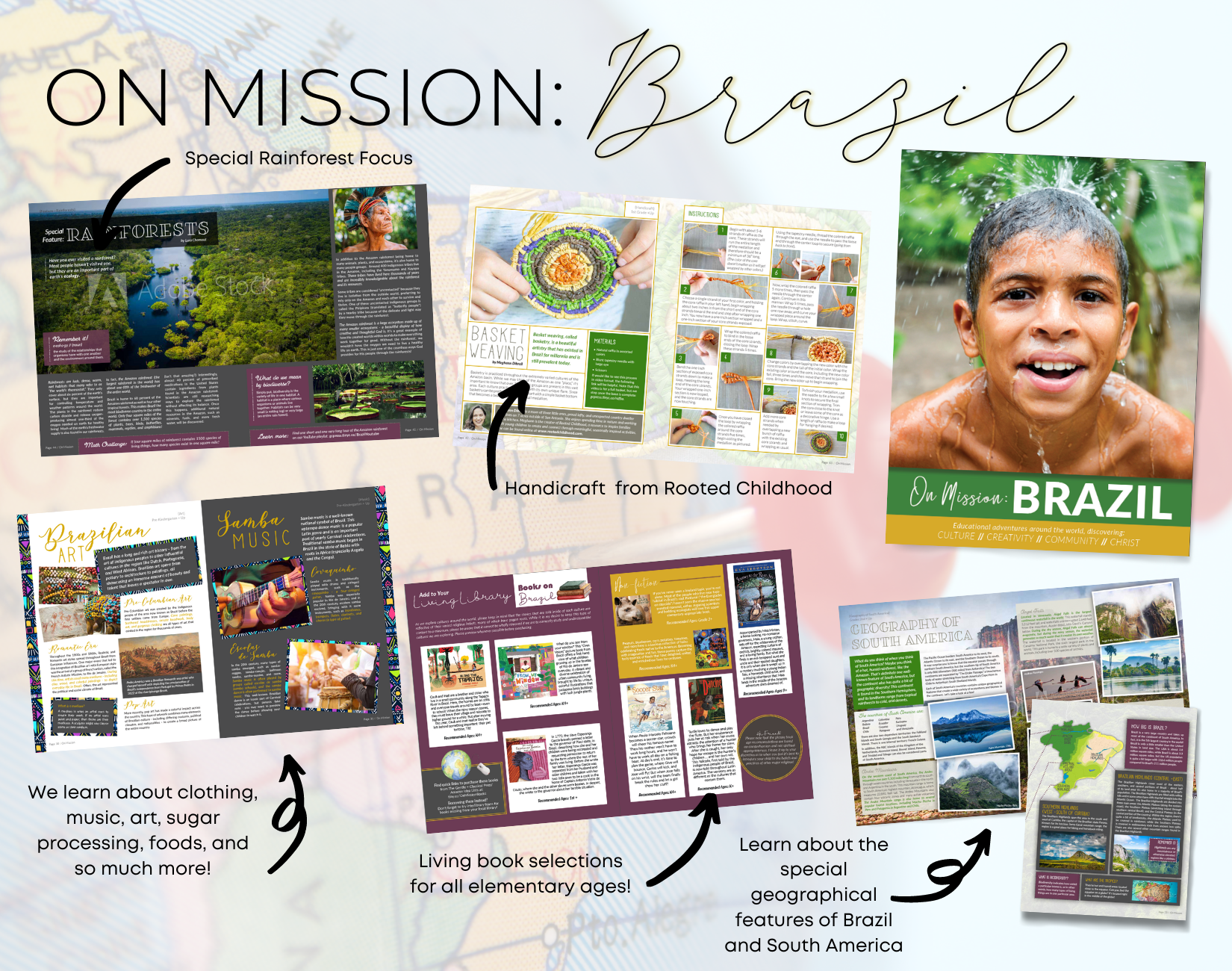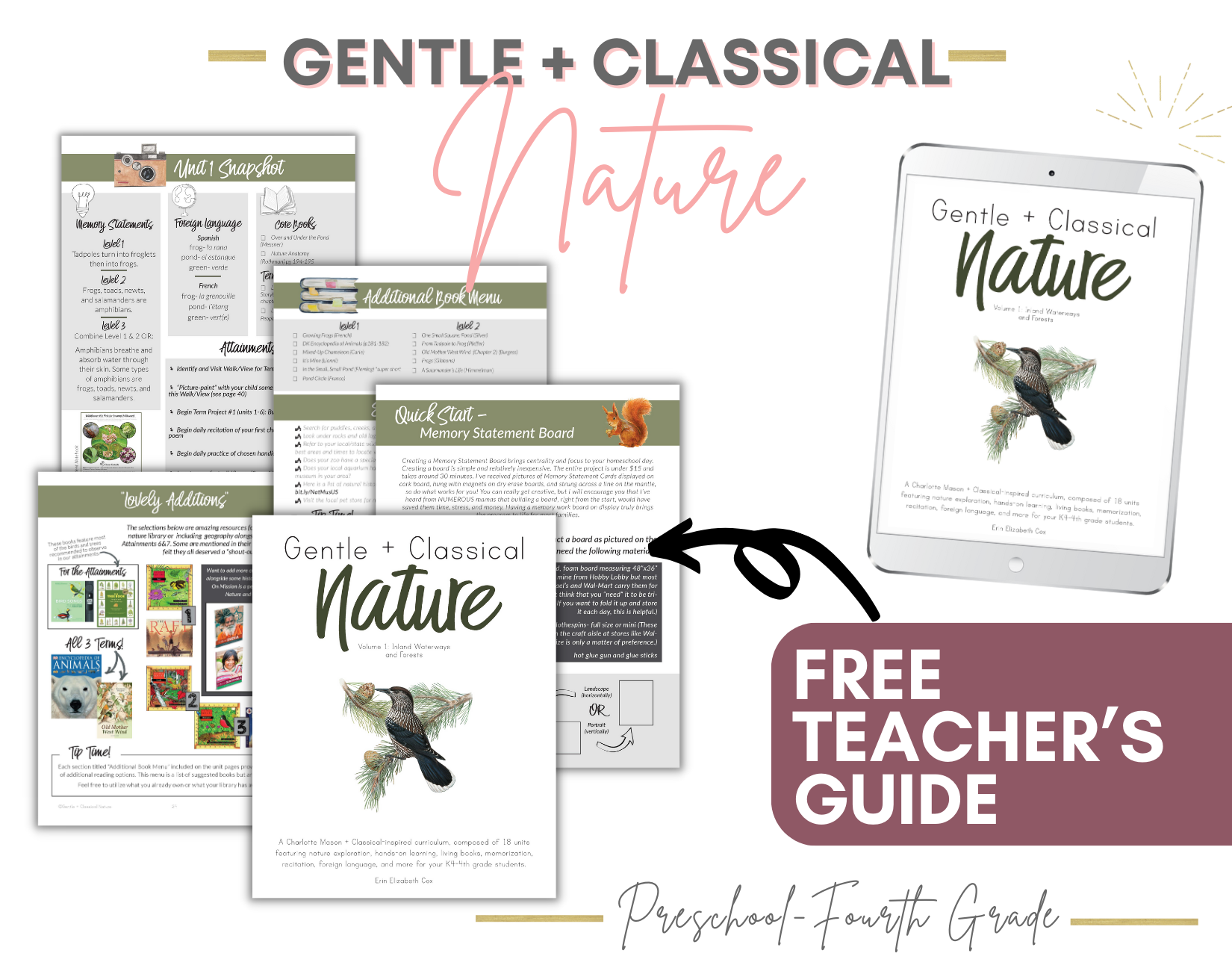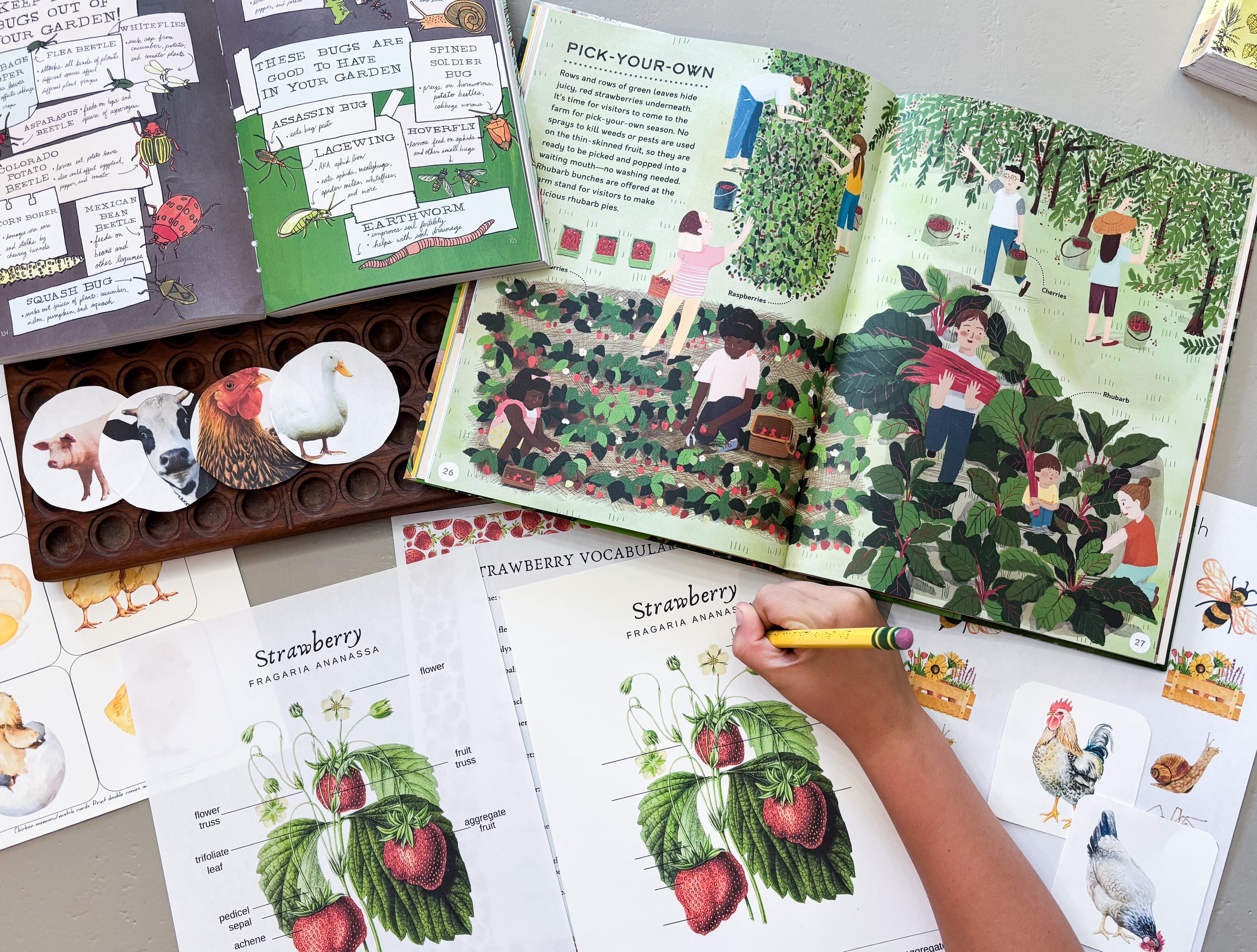Why (and How!) You Should Explore Homesteading & Agricultural Science in Your Homeschool
/In a world where fewer children know where their food comes from—or how it grows—agricultural science has never been more important. Whether you live on a few acres (like we do!) or in a suburban neighborhood, there are countless ways to bring the wonder of agriculture and homesteading into your homeschool. Studying agricultural science isn’t just about planting seeds, and it’s definitely not just for people who farm or homestead. It’s about cultivating responsibility, understanding ecosystems, building life skills, and connecting to our roots.
Here are five meaningful ways to bring agricultural science to life for your learners:
1. Explore Soil, Seeds, and Sustainability with Hands-On Lessons
There’s no better place to begin than the ground beneath our feet. Studying soil types, composting, and the seed-to-harvest cycle helps children understand plant biology and sustainable agriculture. You can plant a container garden, experiment with composting, or even build a mini worm bin to observe decomposition in action. Studying agriculture isn’t just about raising backyard chicks. There is REAL science involved—and it’s fascinating!
Pair hands-on activities with read-alouds and observation journals to help kids document what they see, measure growth, and reflect on cause and effect. (BTW, I have a free resource for you below to dig into all of this!)
2. Use a Literature-Rich Agricultural Science Curriculum
If you're looking for an open-and-go solution that’s gentle, literature-rich, and thorough, Gentle + Classical Agricultural Science is a beautiful place to start. This curriculum combines story-based learning, copywork, poetry, nature study, and hands-on activities all centered around core agricultural themes.
In it, you get to explore in two ways:
You get to explore “backyard” science by exploring the plants, flowers, and birds that are native to YOUR area in a systematic and intentional way.
You get to learn all about homesteading and agricultural practices that you may not get to experience in-person, but you can experience the next-best-thing through this program.
With topics like food preservation, soil science, animal care, pollination, and farming history, it weaves together science, history, geography, and language arts—all through the lens of real-life agricultural wisdom. It’s designed for multiple ages and works beautifully for morning time, unit studies, or as your core science curriculum. (And the Teacher’s Guide is COMPLETELY FREE!)
3. Study Farm Life Through Play and Printables
One of the easiest (and most fun) ways to explore agricultural science is through printables and unit studies that bring farm life to your table. The Homesteading & Skillful Living Mega Bundle from For the Love of Homeschooling includes over 85 resources (valued at $800+) for just $25 during the promotion (which ends 4/22/25).
Inside, you'll find nature studies, science units, early reader farm packs, chicken-raising guides, gardening starters, food preservation activities, and more. Whether your child is learning about life cycles, caring for animals, or starting their first seed journal, this bundle is packed with low-prep ways to bring ag science to life.
4. Investigate the Science Behind Food Production
Agricultural science offers a unique opportunity to study biology, chemistry, and environmental science all at once. Learn how plants photosynthesize, explore irrigation systems, discuss the impact of pesticides, or investigate how microbes play a role in fermentation and soil health.
This is a great way to pair agriculture with STEM learning, encouraging older kids to ask deeper questions about the food supply chain, sustainability, and how modern practices impact the environment. (For middle school students, we include a variety of STEM-focused books that are excellent additions, ensuring that everyone can learn together!)
5. Make It Multidisciplinary (and Meaningful)
One of the greatest benefits of studying agriculture is how easily it integrates with other subjects:
Math: Measure garden rows, calculate planting depth, track germination rates
Geography: Study global farming practices, climate zones, and exports
Language Arts: Read biographies of agricultural pioneers, write farm reports or gardening journals
History: Explore homesteading, the Dust Bowl, the Green Revolution, or traditional food preservation
By teaching agricultural science across subjects, you give your child a real-world context for academic skills—while grounding them in gratitude and stewardship.
We hope that our FREE Teacher’s Guide, the FREE Unit Study (down below), and the Limited-Time Homesteading & Life Skills Bundle will give you all the support you need in exploring this important topic as a family!
Agricultural science is more than planting seeds—it's about planting values: responsibility, patience, curiosity, and care for creation. Whether you’re harvesting tomatoes on a backyard patio or studying pollinators through books and printables, this is a subject that grows right alongside your children.
Ready for that FREEBIE? We are so excited to share one complete unit rom Agricultural Science with you! Enter your email below, and we will send it over!
You might also like:


























